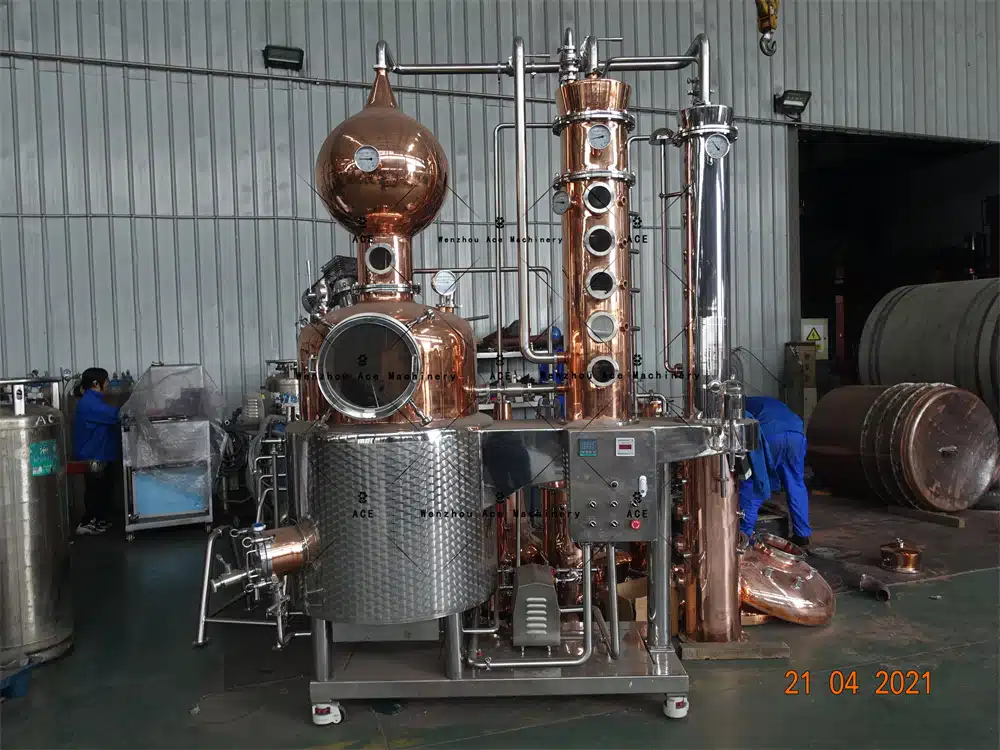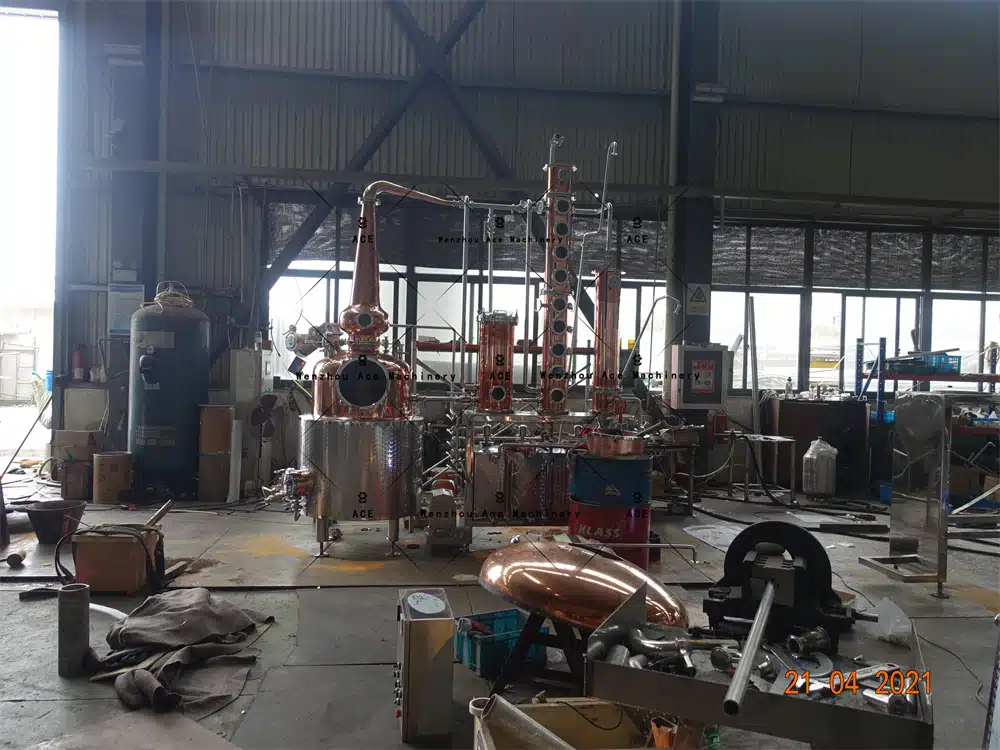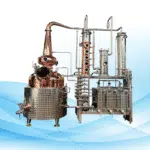Distillation, more than any other process, is the essence of spirits making. Be it the profile or even the weatherproof quality of the spirit, distillation will always make it better. Other factors including the equipment and type of liquor distillation used also impact the type of alcohol produced. If it is the classic pot still that fascinates you, the more practical column still, or the contemporary hybrid setups, knowing the characteristics of each will enhance your appreciation of the liquors you love. In this article, we will unlock the secrets of different types of Liquor Distillation Equipment, covering the main groups of such devices and purposes they serve.
Pot Stills: The Traditional Distillation Method

Overview of Pot Stills
The pot still is the most-elaborated and perfected, and probably the oldest type of distilling device. The production of certain spirits such as whiskey and cognac employs this method till today. In its concept, the whole pot still includes a large pot for boiling the fermented wash, which pot is usually made of copper or stainless steel. We say the failure is of reheating, which causes hot liquids to boil, and the hot alcohol vapor rises through the condenser’s neck.
How Pot Stills Work
The moment a pot is heated, the process of distillation commences, and since alcohol has a lower boiling point than water, it is the first to evaporate. Cooled vapors that condense reform into liquid. Though this procedure prevents the application of more than one distillation process, in extreme cases, double or even triple distillation may be used.
Key Advantages of Pot Stills
- Rich Flavor Profiles: The inherent advantages of pot stills, such as retaining most congeners and mash flavors, make them ideal for whiskeys, rum, brandy, etc.
- Small-batch Production: Pot stills require a great deal of human intervention and are restricted in size, making them well suited for niche or craft distilling.
Limitations of Pot Stills
- Lower Efficiency: Pot stills are less efficient compared to column stills, as they often require multiple distillations to achieve the desired alcohol content.
- Time-Consuming: Pot stills operate in batches rather than continuously, making them slower than modern equipment.
Column Stills: The Super Power of Distillation in Modern Age

A Short Introduction on Column Stills
Of the two types of stills used in most distilleries, the pot still is more traditional, whereas the column still (also known as a continuous still) represents a major advancement in distillation techniques. Column stills contain high, vertically shaped chambers divided into sections with perforated plates. The steam enters from the bottom while the distillate travels downwards.
How Do Column Stills Work
Column stills operate nonstop, condensing alcoholic fumes in various sections of the column according to the boiling points of alcohol components. As vapors rise through different plates, they are fractionally distilled, improving the distillate’s alcohol content, often yielding a volume of over 95% in a single distillation.
Why Do You Turn To Column Stills
- High Efficiency: Column stills are highly efficient due to continuous operation, making them more reliable than pot stills and able to process large quantities in a short time.
- Cleaner Spirit: Column stills produce spirits with fewer odors, toxins, and impurities, making them ideal for producing neutral spirits like vodka and gin.
- High Alcohol Concentration: Column stills can achieve high levels of alcohol purity, such as 95% ABV, in a single distillation run.
Drawbacks of Column Stills
- Loss of Flavor Complexity: Column stills remove more impurities and congeners, which may also strip away some flavor complexity.
- Industrial Nature: Column stills are more suited for mass production and less suitable for artisanal or craft distilling.
Hybrid Stills: Combining Tradition with New Efficiencies
What Are Hybrid Stills?
For distillers who want the best of both worlds, hybrid distillation equipment offers a satisfactory solution. Hybrid stills incorporate features of both pot stills and column stills, allowing for batch distillation to retain flavors or continuous distillation for greater efficiency.
Functionality of Hybrid Stills
A typical hybrid still has a pot base with an optional column top. This allows the distiller to switch between pot distillation for more flavor or use the column for a cleaner end product. Adjusting the reflux in the column allows distillers to balance flavor and purity.
Advantages of Hybrid Stills
- Range of Operation: Hybrid stills can distill a wide variety of spirits, from bourbon to vodka, using the same equipment.
- Flexibility: Adjustments to the column allow distillers to control the flavor and alcohol content.
- Economics and Quality: Hybrid stills provide both higher quality and efficiency by utilizing both types of stills.
Disadvantages of Hybrid Stills
- High Cost: Hybrid stills are more expensive due to their integrated components.
- Time-Consuming Adjustments: The need to carefully adjust various sections of the still requires greater attention and time.
Reflux Distillation: Refining Purity
Understanding the Process of Reflux Distillation
Reflux distillation usually accompanies column distillation but can also be used in hybrid systems. Reflux involves condensing vapor and returning some of it to the column for further separation, which enhances purity through repeated vaporization and condensation cycles.
Key Benefits of Reflux Distillation
- Enhanced Purity: Reflux distillation achieves high levels of purity by recovering valuable alcohol while removing impurities.
- Control Over Distillation: The amount of reflux can be adjusted to control the concentration and separation of the spirit.
Limitations of Reflux Distillation
- Loss of Flavor: High reflux may strip away the flavor, making the spirit less desirable for some people.
- Complex Setup: Reflux distillation requires careful monitoring to maintain the balance between flavor and purity.
Additional Distillation Apparatus Used When Producing Spirits
In addition to pot stills, column stills, hybrid stills, and reflux distillation apparatus, other specialized equipment can be useful, such as:
- Alembic Stills: Mainly used for brandy and essential oils, producing highly flavored output.
- Vacuum Stills: Used for distilling spirits at lower temperatures under vacuum conditions.
- Coffey Stills: A type of column still developed by Aeneas Coffey, making industrial alcohol production more practical.
Conclusion: The Correct Selection of Distillation Equipment
The selection of distillation equipment plays a crucial role in producing spirits like whiskey, rum, gin, or vodka. Pot stills are ideal for rich flavors in traditional spirits, while column stills offer maximum efficiency and purity. Hybrid stills provide flexibility, and reflux distillation enhances purity. Understanding how each type of equipment functions helps distillers craft high-quality spirits, whether in a small craft distillery or large-scale production facility.
















